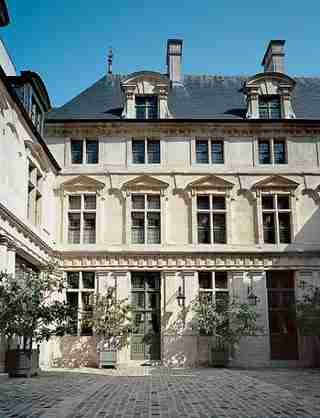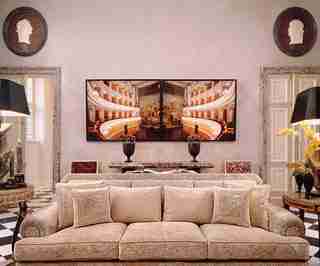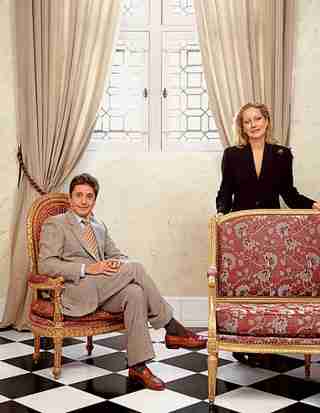A Personal Space

dam-images-architects-2004-03-molyneux-arsl01_molyneux.jpg
Juan Pablo Molyneux bought the lower two stories of the Hôtel Claude Passart, built in 1618 and designed by Gabriel Soulignac, to be the Paris home for him and his wife, Pilar. "Also, I needed a kind of showroom and a place to entertain clients," he says.

dam-images-architects-2004-03-molyneux-arsl03_molyneux.jpg
"Normally, a restoration project like this in Paris would take three years. I did it in 18 months," says Molyneux. A salon has an 18th-century mahogany gueridon, left, and marble floors. The photograph is Teatro de la Fortuna, 2002, from Doug Hall's series depicting opera houses.

dam-images-architects-2004-03-molyneux-arsl02_molyneux.jpg
Molyneux and his wife, Pilar.
dam-images-architects-2004-03-molyneux-arsl04_molyneux.jpg
The living room, adorned with 17th-century tapestries, contains a pair of 1970 low tables by Diego Giacometti, two Louis XV fauteuils and an 18th-century Agra carpet. Wallcovering from Stroheim Romann. Love seat fabric and trim on pillows in foreground from Clarence House.
dam-images-architects-2004-03-molyneux-arsl06_molyneux.jpg
A pair of 17th-century maps hang in the library. The desk is Louis XVI. Wallcovering from Stroheim Romann.
dam-images-architects-2004-03-molyneux-arsl07_molyneux.jpg
In the wine cave, three maiolica vases from San Gimignano rest on a 17th-century table. "Typically, we gather here for wine and cheese," the designer notes.
dam-images-architects-2004-03-molyneux-arsl05_molyneux.jpg
"The dining room, my favorite room in the apartment, was designed as a singerie," Molyneux says. Monkeys representing the owners appear in the oils by Frederic Monpoint; more simians frolic on the embroidered draperies. The marquetry chairs are Italian.
dam-images-architects-2004-03-molyneux-arsl08_molyneux.jpg
"It's a luxurious, nearly empty transition space," Molyneux says of the Chinese lacquer hall. "This is the first time the Paris company that did the lacquerwork has paneled an entire room." A Han Dynasty terra-cotta horse is placed atop a Ming altar table.
dam-images-architects-2004-03-molyneux-arsl09_molyneux.jpg
"It's a luxurious, nearly empty transition space," Molyneux says of the Chinese lacquer hall. "This is the first time the Paris company that did the lacquerwork has paneled an entire room." A Han Dynasty terra-cotta horse is placed atop a Ming altar table.
dam-images-architects-2004-03-molyneux-arsl10_molyneux.jpg
In the guest room, Chinese papier-mâché figures are flanked by 1796 French mahogany pedestals. The engraving is Le Passage du Granique by Charles Le Brun. "The floor—in mahogany, birch and oak—is based on 18th-century Russian parquetry," Molyneux points out.
dam-images-architects-2004-03-molyneux-arsl12_molyneux.jpg
Molyneux remarks on the way light enters the Hôtel Claude Passart: "When the sun floods in, the rooms explode with color. It's like the dawning of the Age of Aquarius." The master bath. The shade fabric is from Brunschwig Fils. "The building is also sometimes known as the Hôtel Jean Bart, after the naval hero," explains Molyneux. "He may have owned the town house after Claude Passart, who was secretary to Henri IV."
dam-images-architects-2004-03-molyneux-arsl11_molyneux.jpg
The master bedroom has a 19th-century Russian center table made of mahogany, on which sits a 19th-century Italian carved mirror with an entwined-snake motif. The two armchairs are also 19thcentury Russian. Canopy lining and chair fabrics from Clarence House.
dam-images-architects-2004-03-molyneux-arsl13_molyneux.jpg
The garden side of the structure.